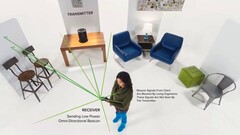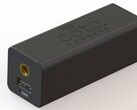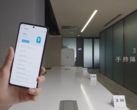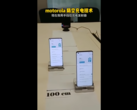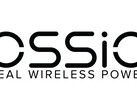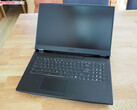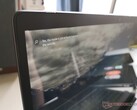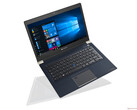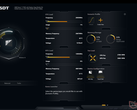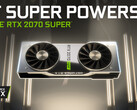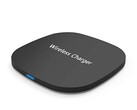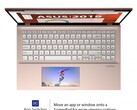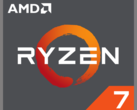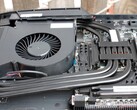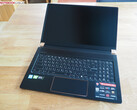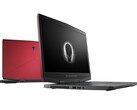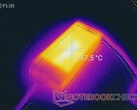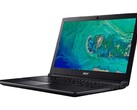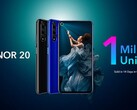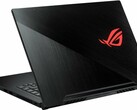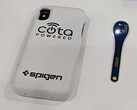First demonstrated at MWC 2019 in Barcelona, Cota is the wireless charging brand by Ossia that focuses on delivering power through RF waves. Unlike the wireless charging pads you may already have at home, however, Cota technology can deliver power at a longer distance through walls and even certain objects to reduce cable clutter. Ultimately, users will be able to recharge their tablets, smartphones, laptops, and other IoT gadgets just by simply entering a Cota-enabled room or building.
Today, Ossia has announced that it has received FCC approval to install Cota in real-world environments. Deployment will be limited to commercial and industrial settings for now, however, and only at a frequency of 2.4 GHz and at a distance of up to one meter. The limitations will also naturally put a cap on how much power can be delivered. It may not be the full vision that Cota promises, but it's definitely a step in the right direction.
If successful, Ossia will want Cota to be as ubiquitous as Wi-Fi and be the go-to solution for wireless charging. The applications are endless when considering the increasing number of mobile devices in the market, but said devices will still require a special Cota receiver in order to be compatible.
BELLEVUE, Wash., June 27, 2019 -- [BUSINESS WIRE] Ossia Inc., the company behind Cota® Real Wireless Power™—the technology that delivers power over-the-air, at a distance, and without the need for line-of-sight—today announced that the Federal Communications Commission (FCC) granted Ossia an equipment authorization for the Cota wireless power system (Cota Transmitter and Receiver), approving its wireless power delivery and data communications under Parts 18 and 15, respectively, of the FCC’s rules and certifying the system to be marketed and sold in the U.S.
This FCC certification marks the culmination of many months of close collaboration between Ossia and the FCC’s Office of Engineering and Technology (OET) and demonstrates that Cota technology delivers meaningful power to devices at a distance while meeting all of the FCC’s stringent Specific Absorption Rate (SAR) requirements for safety. Due to its unique ability to transfer power in a manner that inherently avoids objects and humans, the Cota system is the first of its kind to meet FCC exposure standards in a dynamic environment.
This certification also demonstrates that Cota meets the standards set by multiple international regulatory bodies. Ossia is actively seeking international certification across numerous countries and regions in the near term.
Ossia’s initial certification covers a Cota transmitter operating at 2.4 GHz for deployments in commercial, industrial, and business environments, at a distance of up to one meter. It is the first certified system that does not require a motion detector or an exclusion zone, and has the highest level of radio frequency (RF) power delivered for a certified system. Ossia plans to continue working closely with the FCC on seeking certification for additional applications.
“This certification is a concrete step towards achieving our vision of powering the future through Cota Real Wireless Power. Ossia’s founder, Hatem Zeine and the company’s technology team have created the design and development breakthroughs that have led to this milestone. Not only does it validate the safety and effectiveness of delivering wireless power at a distance, it paves the way for the enablement of billions of devices and sensors that otherwise are limited by the use of wires or batteries. Importantly, this certification is the first for real-world environments where people can be present in the charging area of a power at a distance system,” says Mario Obeidat, CEO, Ossia.
With over 70 patents globally and 210 active utility patent assets, Ossia has been developing Cota Real Wireless Power for many years. In addition, Ossia has garnered substantial investment and commercial traction from leading companies across several industries that have expressed interest in the application of Cota technology for their applications.
“Much like how Wi-Fi is ubiquitous today, we envision that Cota wireless power will positively impact billions of lives around the world as a critical enabler of existing and emerging technologies, including 5G and the Internet of Things. We are committed to continuing our collaboration with the FCC and the OET to bring the full range of wireless power at a distance to the broader market to enable our 5G economy,” says Mr. Obeidat.
Devices based on this first equipment authorization are expected to be available in the market in 2020 through Ossia’s commercial partners.
About Ossia
Ossia Inc. is leading the world on what is possible with wireless power. Ossia’s flagship Cota® technology redefines wireless power by safely delivering remote, targeted energy to devices at a distance. Ossia’s Cota technology is a patented smart antenna technology that automatically keeps multiple devices charged without any user intervention and enables an efficient and truly wire-free, powered-up world that is always on and always connected. Ossia is headquartered in Bellevue, Washington. Visit our website at www.ossia.com.




